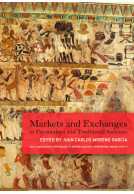Shell Middens in Atlantic Europe (Paperback)
Imprint: Oxbow Books
Pages: 336
Illustrations: 150 illus, 21 tabs
ISBN: 9781842172438
Published: 3rd August 2007
Script Academic & Professional
Pages: 336
Illustrations: 150 illus, 21 tabs
ISBN: 9781842172438
Published: 3rd August 2007
Script Academic & Professional
You'll be £40.00 closer to your next £10.00 credit when you purchase Shell Middens in Atlantic Europe. What's this?
+£4.99 UK Delivery or free UK delivery if order is over £40
(click here for international delivery rates)
Need a currency converter? Check XE.com for live rates
(click here for international delivery rates)
Need a currency converter? Check XE.com for live rates
The archaeological investigation of shell middens has a long and rich history. By the mid 1830s, the presence of artefacts found with large accumulations of shell along the Danish coast had successfully demonstrated that these sites were the result of human activity rather than natural processes. At about the same time in other parts of Europe, shell middens were also being discovered and written about - a process which continued throughout Europe as time went on. Until recently, European Atlantic shell middens attracted only sporadic interest from archaeologists and scientists. However, there has been a notable resurgence in the excavations of shell middens over the last few decades which has been accompanied by the development of a range of new scientific methods applicable to shells and other midden components. There now exists a sizeable amount of information on shell middens, their variability and insights that they have revealed through scientific investigation. A workshop was organised in September 2005 in the Department of Archaeology, University of York, which brought together colleagues working on shell middens along the Atlantic façade of Europe. The aims were to discuss the current work that was being carried out in each country, to consider the use of coastal resources through prehistory and to present new scientific techniques which were being developed. This volume presents the papers from that conference, and is organised geographically, starting with Scandinavia, moving down to Britain, Ireland and France and then to Iberia. For each of these areas there are some papers which provide reviews of the overall state of shell midden research of coastal archaeology. There are also some case studies which provide more in-depth information on sites which are less well known. In addition, several of the papers provide information on scientific techniques which have recently been developed and which are being applied to shell midden sites along the Atlantic façade. Finally, there is a discussion chapter, which suggests ways forward for shell midden research in Atlantic Europe from a Pacific perspective.
Other titles in Oxbow Books...















